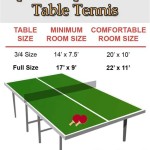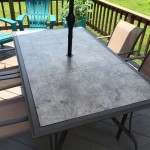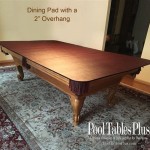Decorating Ideas For Glass Dining Tables
Glass dining tables offer a sleek and modern aesthetic, seamlessly blending into various interior design styles. Their transparent surface allows light to permeate the space, creating a brighter and more open atmosphere. However, decorating a glass dining table requires careful consideration to avoid clutter and maintain a sophisticated appearance. This article explores several decorating ideas for glass dining tables, focusing on achieving a harmonious balance between functionality and visual appeal.
One of the primary advantages of a glass dining table is its versatility. It can complement minimalist, contemporary, traditional, and even rustic decor themes. The key is to select decorative elements that align with the overall design of the room and enhance rather than detract from the table's inherent elegance. Consider the color palette of the surrounding space when choosing centerpieces, placemats, and other decorative items to create a cohesive and visually pleasing environment.
Selecting the Right Centerpiece
A well-chosen centerpiece can serve as the focal point of a glass dining table, adding a touch of personality and style. The transparency of the glass allows the base of the centerpiece to be visible, so it's important to select items with visually appealing foundations. Consider the size and shape of the table when determining the appropriate scale of the centerpiece. A small, round table might benefit from a single, elegant vase, while a larger, rectangular table can accommodate a more elaborate arrangement.
Floral arrangements are a classic and timeless choice for centerpieces. Opt for flowers that complement the color scheme of the room and consider the season. A simple bouquet of wildflowers can bring a touch of rustic charm, while an arrangement of orchids exudes sophistication. To maintain a clean and uncluttered look, avoid overly elaborate floral arrangements that can overwhelm the table. Alternatively, consider using a single statement flower in a minimalist vase.
For a more contemporary aesthetic, consider using sculptural objects as centerpieces. Geometric shapes, abstract art pieces, or even a collection of interesting stones can add visual interest without obstructing the view. Choose materials that contrast with the glass, such as wood, metal, or ceramic, to create a dynamic interplay of textures. Ensure that the sculptural objects are stable and won't easily topple over, especially in households with children or pets.
Candles are another versatile option for centerpieces, creating a warm and inviting ambiance. Choose candles that are appropriate for the occasion and the overall style of the room. Tapered candles in elegant holders can add a touch of formality, while pillar candles in varying heights create a more relaxed and casual atmosphere. Consider using scented candles to enhance the dining experience, but avoid overpowering fragrances that might interfere with the taste of the food. To protect the glass surface, place candles on coasters or trays.
Seasonal decorations can also be incorporated into the centerpiece to reflect the changing seasons. During the fall, consider using pumpkins, gourds, and colorful leaves. In the winter, pine cones, evergreen branches, and festive ornaments can add a touch of holiday cheer. During the spring, fresh flowers, pastel-colored eggs, and delicate figurines can be used to create a cheerful and inviting atmosphere. In the summer, seashells, starfish, and other coastal-themed items can evoke a sense of relaxation and vacation.
Incorporating Placemats and Table Runners
Placemats and table runners are practical and decorative elements that can enhance the look of a glass dining table. They protect the glass surface from scratches and spills while adding visual interest and defining individual place settings. Choosing the right materials, colors, and patterns is crucial to complement the overall design of the room and the style of the centerpiece.
Linen placemats and table runners offer a classic and elegant look. They are available in a wide range of colors and patterns, allowing for easy coordination with the existing decor. Linen is a durable and absorbent material, making it ideal for everyday use. However, it requires regular ironing to maintain a crisp and polished appearance. Consider using stain-resistant linen to minimize the risk of permanent damage from spills.
Woven placemats and table runners, such as those made from jute, rattan, or bamboo, can add a touch of texture and natural warmth to a glass dining table. These materials are particularly well-suited for rustic or bohemian-inspired interiors. They are durable and easy to clean, making them a practical choice for families with children or pets. However, they may not be as absorbent as linen, so it's important to wipe up spills immediately.
Vinyl or PVC placemats are a durable and water-resistant option that is ideal for protecting the glass surface from spills and stains. They are available in a wide range of colors, patterns, and textures, including designs that mimic the look of linen or leather. Vinyl placemats are easy to clean and maintain, making them a practical choice for busy households. However, they may not be as aesthetically pleasing as other materials.
Consider using a table runner to add a pop of color or pattern to the glass dining table. A contrasting color can create a dramatic effect, while a complementary color can create a more harmonious look. Choose a runner that is the appropriate length for the table, allowing it to drape slightly over the edges. Avoid using a runner that is too short, as it can look awkward and unfinished.
Individual placemats can be used to define each place setting and protect the glass surface from scratches and spills. Choose placemats that are large enough to accommodate a dinner plate, cutlery, and a glass. Consider using different placemats for each guest to add a touch of personality and individuality to the table setting.
Optimizing Lighting and Reflections
Lighting plays a crucial role in enhancing the aesthetic appeal of a glass dining table. The transparency of the glass allows light to reflect and refract, creating a brighter and more open atmosphere. Selecting the right lighting fixtures and strategically positioning them can dramatically improve the overall ambiance of the dining room. Consider both natural and artificial light sources when designing the lighting scheme.
Natural light is the most desirable source of illumination for a dining room. Position the glass dining table near a window or patio door to maximize the amount of natural light that enters the space. Consider using sheer curtains or blinds to filter the light and prevent glare. Avoid placing the table in direct sunlight, as this can cause the glass to become uncomfortably hot.
Chandeliers are a classic and elegant lighting fixture that can add a touch of formality to a dining room. Choose a chandelier that is the appropriate size and scale for the table and the room. Consider the style of the chandelier and ensure that it complements the overall design of the space. A crystal chandelier can add a touch of glamour, while a wrought iron chandelier can create a more rustic and industrial look.
Pendant lights are a versatile lighting option that can be used to create a more modern and contemporary look. Choose pendant lights that are the appropriate height above the table, ensuring that they provide adequate illumination without obstructing the view. Consider using multiple pendant lights in a row to create a dramatic effect. Pendant lights are available in a wide range of styles, materials, and colors, allowing for customization to suit any decor.
Table lamps can be used to add a touch of warmth and ambiance to a dining room. Place table lamps on sideboards or consoles near the dining table to create a soft and inviting glow. Choose lamps with shades that complement the color scheme of the room. Avoid using lamps with overly bright bulbs, as this can create a harsh and unflattering light.
Consider using dimmer switches to control the intensity of the lighting in the dining room. This allows for customization of the lighting to suit the occasion and the mood. Dimmer switches can be used with chandeliers, pendant lights, and table lamps. Experiment with different lighting levels to find the perfect balance between functionality and ambiance.
Reflections play a significant role in enhancing the visual appeal of a glass dining table. The transparent surface reflects light and surrounding objects, creating a sense of depth and spaciousness. Consider using mirrors to strategically amplify the reflections and create a more dynamic and visually interesting environment. Placing a mirror on a nearby wall can double the apparent size of the dining room and enhance the overall sense of openness.
By carefully selecting the right centerpiece, incorporating appropriate placemats and table runners, and optimizing lighting and reflections, it is possible to transform a glass dining table into a stunning focal point that enhances the overall design of the dining room. Remember to consider the size and shape of the table, the color palette of the surrounding space, and the overall style of the room when making decorating decisions.

40 Glass Dining Room Tables To Revamp With From Rectangle Square Round Table Decor

Adorable Dining Space Glass Room Table Top Decor

101 Chic Decor Ideas For Glass Dining Table And Chairs Laura James

Home Dzine Decor Ideas For Glass Dining Tables

30 Ways To Incorporate A Glass Dining Table Into Your Interior Digsdigs

15 Round Glass Dining Room Tables That Add Sophistication To Mealtime

Add Sophistication To Your Meals With These Glass Dining Tables Modern Room Table Decor Centerpieces

51 Glass Dining Tables That Create An Upscale Atmosphere For Every Meal

Glass Top Table 7 Rectangle Ideas For Home

Home Dzine Decor Ideas For Glass Dining Tables








